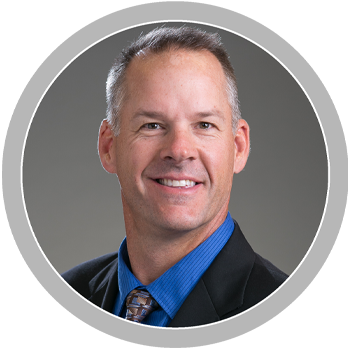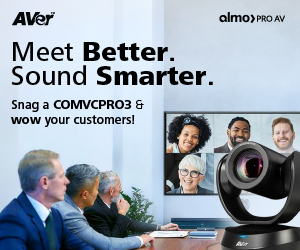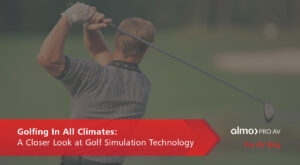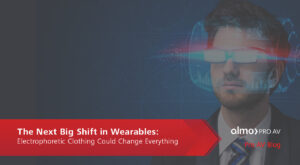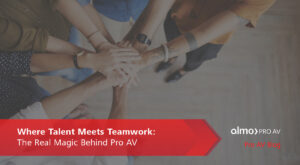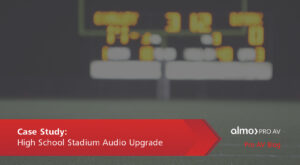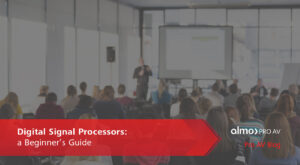Golfing In All Climates: A Closer Look at Golf Simulation Technology
This is the ultimate “Cheesy Proud Mom embarrasses her kid” opportunity – and I’m taking full advantage! Happy 40th, Rick Greene! Mom loves you! Haha. Thank you all for letting me have that moment.
Now, back to the story. We arrived early to set up the decorations, which gave me the chance to see the existing patrons enjoying the venue’s golf simulators. I was amazed – many people brought their own clubs! Some were there for a casual night out, while others were clearly focused on improving specific aspects of their game. The vibe was laid-back and fun, complete with drinks from a bar area.
That special evening piqued my curiosity, so I decided to dig deeper and learn how this emerging market is leveraging our Pro AV tools. From event spaces to private homes, golf simulators are rapidly gaining popularity. Let’s explore the benefits of golf simulators and how this technology is transforming the way we learn and play the game.
The Rising Popularity of Golf Simulators
The market size of golf simulators was approximately 1.7 billion in 2024, and is expected to reach nearly 1.9 billion in 2025, as detailed in this report.
Additionally, the National Golf Foundation reported that 6.2 million Americans used golf simulators from 2022-2023, with pre-pandemic levels just under 4 million.
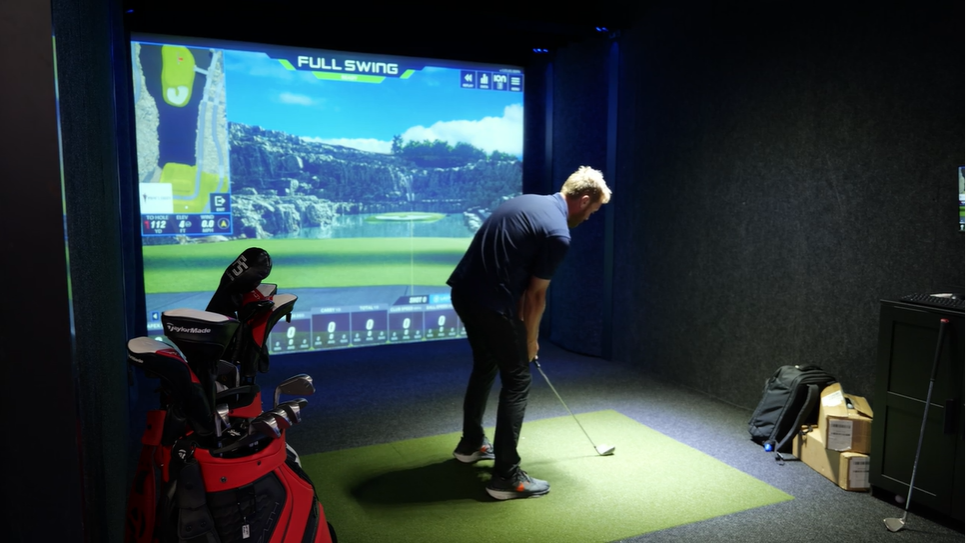 How Do Golf Simulators Work?
How Do Golf Simulators Work?
A golf simulator is comprised of a screen or net, along with analytic software and usually short throw projector. The golfer can project the visuals on a screen designed to withstand the impact of a golf ball or view the data on a separate display.
The Benefits
Year-Round Golfing: Since most golf simulators are installed inside, this technology allows users to golf throughout the year – no matter the weather conditions. The outdoor golf seasons traditional occurs from the spring through the fall, so users can practice their hobby throughout the year with the help of these indoor simulators.
At-Home Practice: Along with year-round golfing, golf simulators provide golfers with the opportunity to practice their skills at home, rather than commuting to a golf course or driving range. Plus, golf simulators are an excellent choice for those who prefer a quieter environment in the comfort of their own home.
Additional Info: Golf simulators are an excellent choice for golfers looking to improve their swing. There are a variety of golf simulator programs to choose from, each with an assortment of statistics and various courses designed to help users enhance their skills. Including information about speed, club path, face angle, and more, using golf simulator software is an efficient way for users to analyze data and make adjustments.
Applications
Residential Spaces: For those looking to dedicate their time to practice, golf simulators are a common choice for a user to install within their home. It’s definitely a new expansion on the man cave or fun family experience.
Restaurants and Event Spaces: Although many golfers use the technology as a method of improving their swing, golf simulators are growing in popularity in bars, restaurants, and event spaces. Why? It’s like Axe Throwing or Escape Rooms it’s a new experience that everyone wants to get out to do.
Cruise Ships: Golf simulators are an up-and-coming source of entertainment for cruise guests, as the technology provides a relaxed, fun-filled environment for practicing golf while on vacation. It’s used to be shooting golf balls off the back of the boat which, ummm not’s so good for the environment they can now offer a new fun activity to appeal to the first timer golfer or the seasoned enthusiast.
Transforming How Golfers Learn
In fact, simulation technology is used in a variety of training applications, allowing for a safer environment with greater accessibility and repeatability.
This subject is detailed in a recent article from Panasonic Connect, which explains the benefits of simulation technology for pilots in training. As the demand for pilots has grown since the pandemic, the airlines used flight simulation technology as a method of training the new generation.
Along with creating a safer environment for those in flight training, simulation technology eliminates the worry of poor weather and facilitates a more consistent, reliable schedule for practice. This same appeal applies to golf simulators as well, ensuring that golfers can practice their skills at any time.
Learn more about the benefits of simulation technology and its impact on our learning process: 3 Ways Simulation Technology Revolutionizes the Way People Learn Panasonic North America – United States.
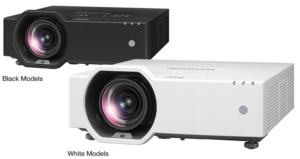 An Ideal Staple of a Golf Simulator Setup
An Ideal Staple of a Golf Simulator Setup
Designed to reduce shadows and enhance flexibility, the PTVMZ6ST LCD Projector series from Panasonic is an innovative staple of a golf simulator setup. With stress-free installation, clear projection, and eco-friendly construction, the series prioritizes bright and efficient performance. Explore the series here.
Golf simulation locations are popping up all over the country. Take a look around your area – you might be surprised at how many have opened up nearby.
These venues need projectors, screens, audio systems, and displays – and that’s where you come in. From immersive visuals inside the simulation bays to engaging AV setups throughout the space, there’s a growing demand for the tools you provide.
Whether you’re looking to grow your business or just want to practice your swing or plan a fun date night, check out a local golf simulator near you.
For more information on golf simulation technology, feel free to reach out. I’m happy to help.

Angie Greene | DSCE
Business Development Manager
Supported Manufacturers: Panasonic Connect

 Displays and Fashion Have Evolved
Displays and Fashion Have Evolved What Is Electrophoretic Flexible Clothing?
What Is Electrophoretic Flexible Clothing?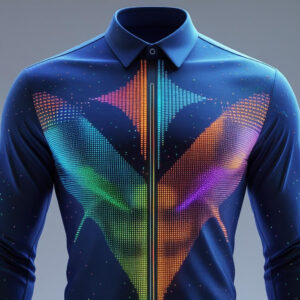 Real-Time Updates
Real-Time Updates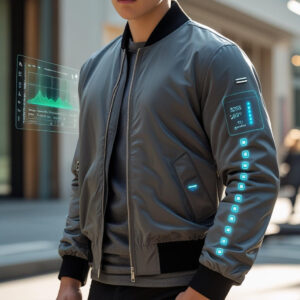 Patient Monitoring
Patient Monitoring
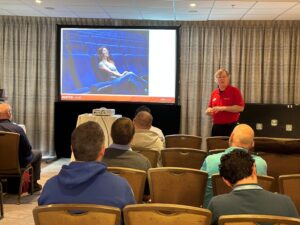 Audio hits because someone knew how to tune it.
Audio hits because someone knew how to tune it. We play well with others. We share what we know. And we show up—online, onsite, at trainings, and at events. Trade shows and demos give us a chance to exchange more than information—we share a little of ourselves. That’s where real bonds form, and those connections make everything we do together stronger.
We play well with others. We share what we know. And we show up—online, onsite, at trainings, and at events. Trade shows and demos give us a chance to exchange more than information—we share a little of ourselves. That’s where real bonds form, and those connections make everything we do together stronger.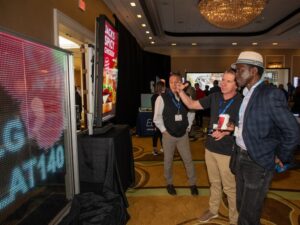 It’s these behind-the-scenes wins that turn potential into real results.
It’s these behind-the-scenes wins that turn potential into real results.

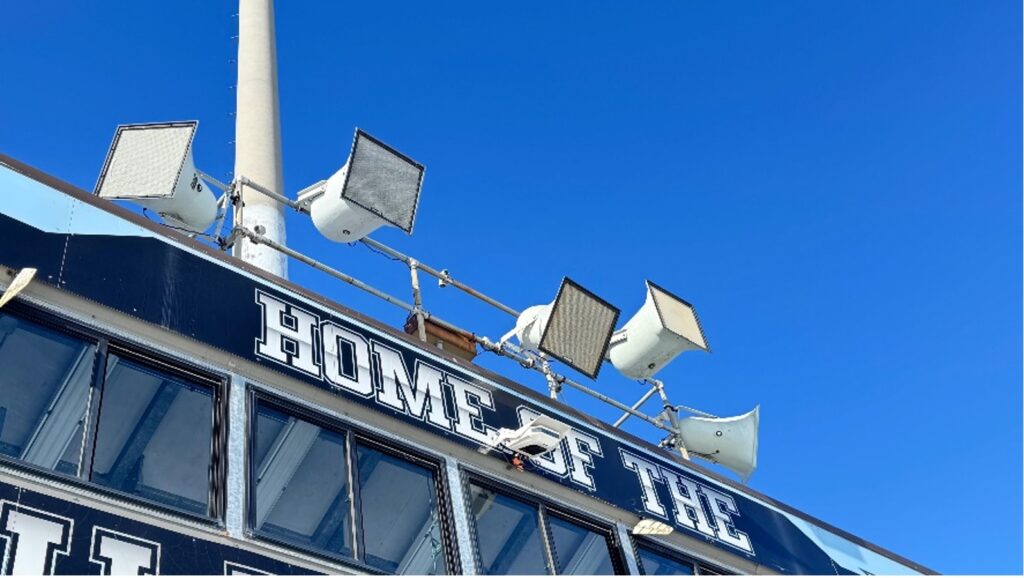
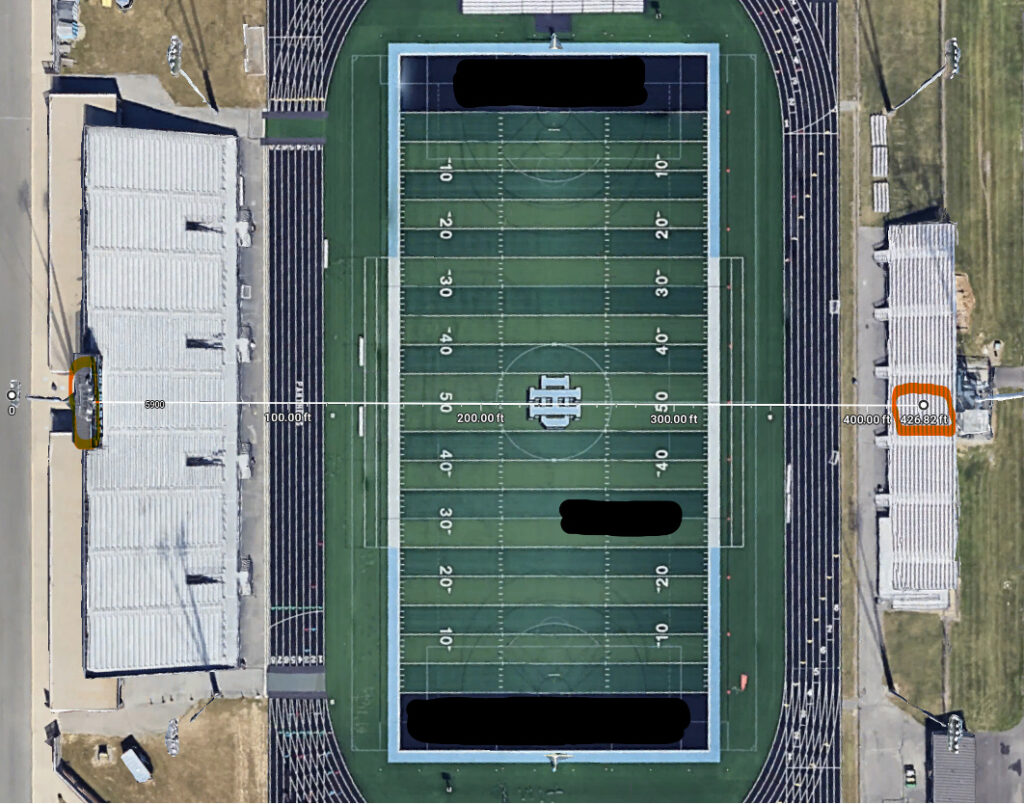
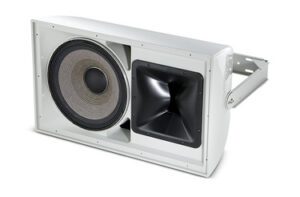 After explaining the limitations of the project, Dave surprised me when he stated that JBL’s
After explaining the limitations of the project, Dave surprised me when he stated that JBL’s 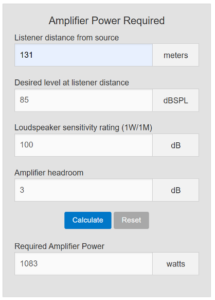 Finally, something we could work with! We settled on the Crown DCi 2×1250 to power (2) JBL AW566 loudspeakers mounted above the press box to provide sound to the visitors’ side. The home side situation was much easier to solve for – it simply required selecting speakers with the appropriate coverage patterns. Those turned out to be (3) JBL AWC82 speakers, powered by a Crown DCi 4×600. We also recommended relocating the home side speakers so that they would no longer be in the acoustic shadow of the press box roof, as the previous Community speakers were.
Finally, something we could work with! We settled on the Crown DCi 2×1250 to power (2) JBL AW566 loudspeakers mounted above the press box to provide sound to the visitors’ side. The home side situation was much easier to solve for – it simply required selecting speakers with the appropriate coverage patterns. Those turned out to be (3) JBL AWC82 speakers, powered by a Crown DCi 4×600. We also recommended relocating the home side speakers so that they would no longer be in the acoustic shadow of the press box roof, as the previous Community speakers were.
 Below is the front and rear of a
Below is the front and rear of a 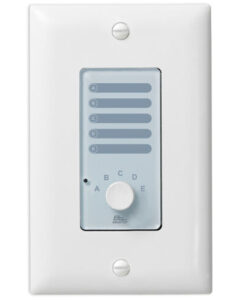 As mentioned above, there are not any controls or buttons on the front panel. Instead, DSPs are generally controlled by external control systems, such as AMX, Kramer, or Atlona. Users interact with a custom touch panel to send control signals such as channel mute, volume control, input/output routing and mixing, gating, and more! In simpler systems, BSS DSPs can also be controlled by a simple button/volume knob control panel, such as the
As mentioned above, there are not any controls or buttons on the front panel. Instead, DSPs are generally controlled by external control systems, such as AMX, Kramer, or Atlona. Users interact with a custom touch panel to send control signals such as channel mute, volume control, input/output routing and mixing, gating, and more! In simpler systems, BSS DSPs can also be controlled by a simple button/volume knob control panel, such as the 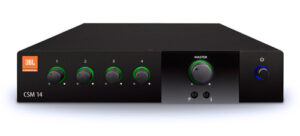 Of course, a DSP is not a fit for every situation. For example, most live performances (musical or otherwise) are better suited to being controlled by a real live person in front of a mixer who can respond in real time to the action on stage. Additionally, smaller, less complex systems (such as in a bar, restaurant, or retail store) which do not require advanced routing or signal control might be better suited to use a rack-mounted mixer (such as the
Of course, a DSP is not a fit for every situation. For example, most live performances (musical or otherwise) are better suited to being controlled by a real live person in front of a mixer who can respond in real time to the action on stage. Additionally, smaller, less complex systems (such as in a bar, restaurant, or retail store) which do not require advanced routing or signal control might be better suited to use a rack-mounted mixer (such as the 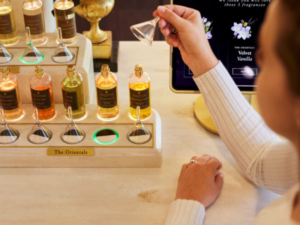 Amplified Engagement and Memorability:
Amplified Engagement and Memorability: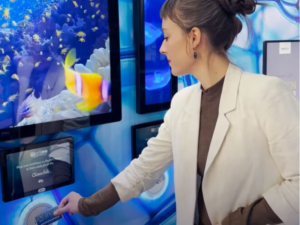 Personalized and Relevant Experiences:
Personalized and Relevant Experiences: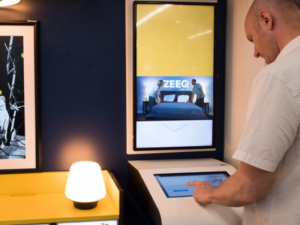 Streamlined Information Delivery and Self-Service:
Streamlined Information Delivery and Self-Service: